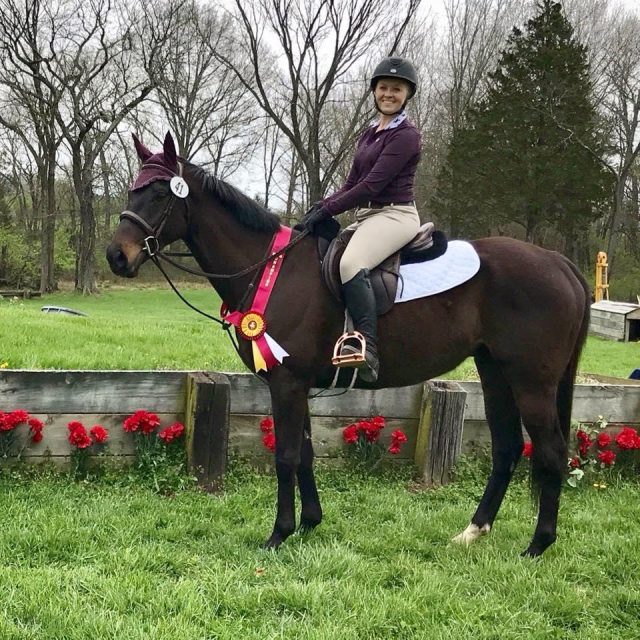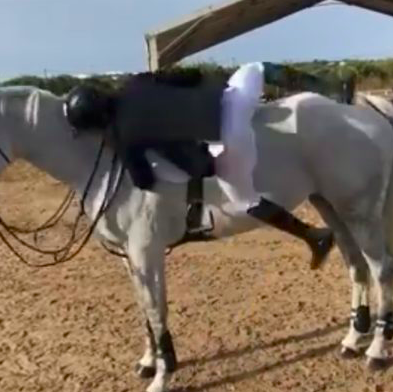
As I tossed my horses their breakfast this morning, all I could think about was how just a few weeks ago I couldn’t see my breath as soon as I walked outside. Winter is coming and not just in the Midwest. All across the country the seasons are changing, causing many of your horses to turn into giant walking fluffballs.
While clipping can be a controversial topic among horsemen and women, it definitely has its benefits when considering the well-being of your horse. We reached out to Tim Gaskell, AKA Tim the Clipper Guy, to pick his brain on the topic of clipping in this week’s Draper Therapies featured post.
Determining Which Clip Best Suits Your Horse
If your horse is a pasture puff in the winter months, then it may be more suitable for them to enjoy some time as as a woolly mammoth. But if your horse will be working throughout the winter, a clip in some shape or form may allow them to be more comfortable.
“Deciding which clip is best for your horse can be as difficult as any question you have for the health and well being of your horse,” shared Tim. Some questions he encourages you to consider before dragging out the clippers include:
- What is your climate like?
- Are you riding primarily indoors or outdoors?
- Are you showing within the month?
- Are you a hunter, jumper, eventer or dressage rider?
- Does your horse hot run hotter or colder?
“Your climate, workload, discipline and yes, even your show schedule are all factors into how I body clip your horse,” he continued. “Take for example the traditional hunter clip. You leave a saddle pad and you leave the legs unclipped. This is for when you take your horse out in the hunt field, you protect their legs better by leaving the hair, and offer a bit of padding under the saddle when sitting on your horse all day. The hair under the saddle also helps to prevent saddle rubs on their back.
“However, in today’s hunter shows, you will generally do a full clip where all of the hair comes off for an extremely clean and sharp look. Now cross over to the jumpers. Most like that clean full clip look, while others just want the hair off the body to keep their horse cool while leaving the legs and saddle pad for the comfort of the horse. Every type of clip is useful and can be used across multiple disciplines.”
The Time to Clip
One of the largest factors when determining the appropriate time of year to clip your horse is your climate. For example, Tim shared that due to the heat and humidity in south Florida, you find that most show horses are clipped all year long. In milder climates, however, you may find that your horse does not need to be clipped during certain times of year.
“There are several different things to look for in your horse that will let you know if they need to be clipped,” he told JN. Stomach upset or diarrhea is a big one. “I’m not telling you to not call your vet, but they will tell you too that if your horse cannot cool down properly, their electrolytes become unbalanced, they get dehydrated, their core temperature cannot regulate, and they will have diarrhea. I have several horses that I have been ‘prescribed’ to by Veterinarians to help alleviate heat issues. Sometimes all they need is to cool off more efficiently.”
If your horse suffers from medical issues, such as Cushing’s, they could have a more difficult time regulating body temperature and an appropriate clip can help keep them comfortable. Rain rot or scratches can also be a sign that is it time for a good clipping. “If your horse cannot dry properly and their hair holds too much moisture, it can grow fungus and hold bacteria,” Tim elaborated. And then, of course, you always have to consider your horse’s workload and show schedule.
The Best Tools and How to Care For Them
Your clip job is only as good as the tools you use to create them. Whether you are a barn manager at a busy show barn or you just have one or two horses at home, caring for your clipping equipment is a must to keep you and your horses happy.
As a professional, Tim keeps several clippers on hand all-year-round so he always has a fresh pair ready to work. While clipping, he oils his blades every 15-20 minutes and always brushes out any hair that is stuck in the clipper or their moving parts. One of the biggest factors that has boosted the longevity of Tim’s clippers is that he maintains his clippers himself. “I change out the blade drives every 50 horses or so to make sure all of the horses look their best, and so I don’t get caught with unkempt clippers that need repair in the middle of a busy day.”
Another thing that makes clipping easier is having the right products on-hand. “Products are important for a great clip. A lot of the horses I clip are clipped the day before they go into the ring or before they leave for the show, so having a clean horse is key to a clean clip. My goal is to make it look like I never clipped the horse. ”
Tim’s favorite products include:
- A gentle, non-oil-stripping shampoo for a good bath beforehand (a clean horse is much easier to clip and better for your blades!). Tim’s go-to product? Shapley’s High Shine Shampoo.
- After a bath, Tim recommends using Shapley’s Magic Sheen or their No. 1 Light Oil. These products allow for a quicker, cleaner clip without dulling out your horse’s coat.
- “Keeping the flies and gnats off of the horses while clipping keeps them happy,” he shared and for that reason, he always keeps a bottle of Enviro Equine Fly Spray on hand.
- In regards to clipping tools, Tim favors the Wahl KM10 clippers and uses the Andis T10 or T84 Ultra Edge blades. For clipping the ears and muzzles, he prefers a quiet, cordless clipper with an adjustable blade such as the Wahl Bravura or Andis Pulse Ion.
Clipping For the First Time
Clipping can be quiet an experience for both the horse and handler, but Tim says it all drills down to one big thing: patience.
“Being observant and having patience are the two most important qualities to have while working with horses. I am always observant of my surroundings and how a horse reacts to surroundings or how they react in general,” he said regarding clipping horses for the first time or working with a horse who may not love to be clipped.
If it is your first time clipping a horse, Tim shared this sage advice: “Take a deep breath and know that once you commit, you need to follow through and finish. Have someone with you for safety. Just because you buy the best and most expensive products or machines, doesn’t mean your horse will turn out their best. It takes practice, a lot of practice. Never be afraid to ask for help. Never trust your horse.”

Photo provided by Tim Gaskell
So get out there and get to clipping! Tim, the Draper team and all of us at Jumper Nation wish you a safe and successful show season this winter. For more information and excellent resources regarding clipping, be sure to follow Tim on Facebook and Instagram. While his availability for clipping this winter is limited, he loves to offer educational seminars when time allows! And be sure to check out the many amazing products offered by Draper Therapies to help keep your ponies happy and healthy throughout the winter circuit and beyond.
Happy clipping and Go Jumping!





































